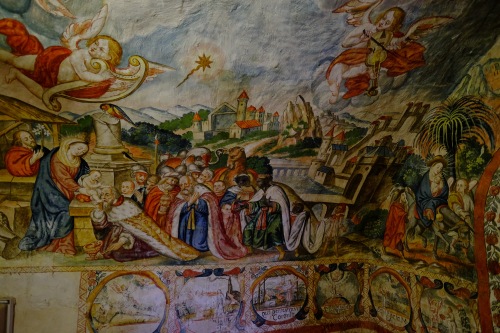My boss is a carpenter!
I am writing after a hiatus of about two years. I want to reflect and look forward – a tad.
Three years ago I underwent my second back surgery. The first was about fifteen years before that. Recovery was long as once I went home I was forced into strengthening and rehabilitation – I spent a year swimming to strengthen my legs and lower back. Then over two years ago I was able to return to Peru. There I was able to train a much younger priest to take over that ministry. Two years ago Covid hit the world and I was somewhat depressed as I had not only stopped visiting Peru, indeed I could not due to the difficulties of the pandemic. Now there seemed nothing to do. Was I on the scrap heap of former ministries?
God stepped in and gave me a project, with a reminder. The project was the saving of an old house that had spent over thirty years in the hands of renters. The reminder was a friend saying to me, “Your boss is a carpenter.” So true, So true! The prayer below was taught to me by my first and greatest US bishop – +Alex Stewart.
O Christ, the Master Carpenter,
who at the last through wood and nails purchased our whole salvation;
wield well your tools in the workshop of your world,
so that we who come rough-hewn to your work bench may be fashioned to a truer beauty by your hand.
Amen.
In July of 2020 I received a phone call. A friend of mine had retired and would I serve his parish as an interim for about six months. I agreed, and am still here, probably until the middle of this summer. I have learned a great deal about zoom, about spiritual warfare, about a renewed love of preaching the lectionary. The invitation was to help the parish become mission focused in all that they would be and do.
I am passionate about mission. Back in 1995 I started studying congregational development and how to focus a parish on mission, rather than on institutionalism. Here was an invitation to put this into practice in a world that was brand new, a pandemic riddled world. I started to relearn what was important in parish life. It was to build on tradition and custom; a sense of place and yet a sense of being unsettled as buildings and services were inaccessible except by TV. We all had to adapt and find out what was important. We spent many months using Morning Prayer rather than a service of Holy Communion. With that change came a greater focus on God’s Word Written, week by week by week. I have always loved the lectionary, and now I could again unpack the scriptures in a way that I have not done since I was last a parish priest. We have now returned to eucharistic worship. The search and call process is nearing its conclusion. I have probably less than six months left at this wonderful parish.
I have no idea what God has for me next. The construction phase of our home is nearing completion. Polly, my wife, wants me to have a garage sale and sell most of my tools. I will. When I retired in January 2009 to become a missionary in Peru, I gave away all my books. I figured that I no longer needed them. The same will be true of my tools. They have served me well. I will keep a saw, a drill, a few screwdrivers and hammers. When arriving in Peru I learned a new language and had kept my Bible. I learned to read it in a new language. My preaching became limited by my ability in this new language. Since I became an interim, I have had the joy of preaching in English, expositing the scriptures and seeking to build up and encourage our congregation. I am approaching 78. That means getting closer to fourscore years. Am I old? Yes, but I feel reborn. That has been the gift of God and the gift of this congregation. It is not that I doubt being born again of the Spirit of God. It is that somehow a youthful energy has been rekindled. The time is short there is so much to be done.
So we will keep it simple – bring Jesus to people and people to Jesus. Turn to Jesus, turn to mission and build up God’s Church – the mission society of which we are all a part. God is so good.



 This has been a good and busy year. Please, as we end this year when there is much uncertainty in the world, join me in heeding the Prince of Peace. The angels announced Jesus with the Christmas message – Fear not, Jesus is coming. Jesus has come and dwelt among us. His perfect love casts out fear. We seek during these times to make Jesus present as we serve others near and far.
This has been a good and busy year. Please, as we end this year when there is much uncertainty in the world, join me in heeding the Prince of Peace. The angels announced Jesus with the Christmas message – Fear not, Jesus is coming. Jesus has come and dwelt among us. His perfect love casts out fear. We seek during these times to make Jesus present as we serve others near and far.


 I must rebuild my funds with SAMS-USA so as further to travel to Peru in 2017. Peru is where God has been leading me, using me and continues to call me.
I must rebuild my funds with SAMS-USA so as further to travel to Peru in 2017. Peru is where God has been leading me, using me and continues to call me.
